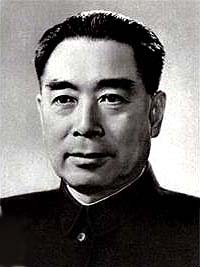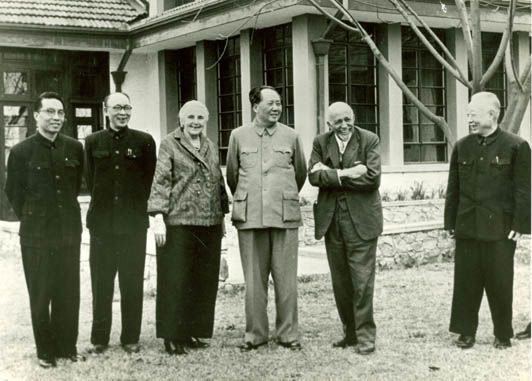Taiwan Battles WHO and China Over Coronavirus - AMD and TSMC Going Strong
The Trump administration exerted a lot of pressure on the Dutch company ASML to cancel its planned sale of EUV scanning machines to China earlier this year. Tensions are increasing between the US and China over China coveting this technology coming out of Taiwan. What is it going to be worth with hundreds of Chinese companies listed on US stock exchanges with an estimated total worth of about $1.3 trillion? Most of these Chinese companies have never been audited. Most of these Chinese companies too are rife with fraud and scandals.
News update for 30 April 2020: China says it 'expelled' U.S. Navy vessel from South China Sea
In the Global Times article mentioned in the Washington Times article below, the Global Times represents the "hawks" inside the CCP in China. In several articles, they suggested using electromagnetic and laser weapons to target and harass US Naval assets patrolling the South China Sea. With the frequency of those FONOPs (freedom of navigation operation) in the South China Sea, we can see possibly at some point a real or false flag coming soon. The US Navy seems to be baiting or provoking China to make an aggressive military move. The last time we saw provocations like this was the Gulf of Tonkin incident (kicked off the destruction of Vietnam). If there is one thing the US Navy is good at it's provoking "first blood." China's goal: manufacture its own microprocessors to fuel its technological expansion. To do this it will do whatever it can to obtain this microprocessor technology from Taiwan. It is an extremely almost untenable position to prevent because roughly 40 percent of the Taiwanese are sympathetic to China. Target: Taiwan and TSMC. The 4th industrial revolution will be powered by A.I. when Moore's law will become innovated out of existence.
"Dad, you start the Vietnam war and I'm going to start a band?"
Several posts back, we recommended with urgency the USS Roosevelt be forward deployed with a full compliment of support ships, weapons systems and fighter aircraft and parked between Taiwan and China in the South China Sea. The commander of the USS Roosevelt was relieved of his command when Capt. Brett Crozier "raised the alarm" about coronavirus on his ship. We don't know the details but it was officially stated Capt. Brett Crozier "revealed classified information" on the status and combat readiness of the USS Roosevelt. There is probably much more going on here noting Capt. Brett Crozier's 5,000 member full compliment crew cheered Captain Crozier when he announced his being relieved of command.
The US Navy has now announced they are likely going to reinstate Capt. Brett Crozier. The USS Roosevelt with Captain Brett Crozier in command just left the South China Sea when the coronavirus incident occurred. That indicates intelligence op of some kind likely to pull the USS Roosevelt out of the South China Sea using coronavirus as cover when the USS Roosevelt left for the Philippine Sea to not agitate China likely. That would also explain why the crew of the USS Roosevelt cheered Captain Brett Crozier when he announced his being relieved of command. The crew knew the coronavirus was a deliberate political shake down to pull the USS Roosevelt out of the South China Sea.
Navy wants to reinstate fired captain of coronavirus-hit aircraft carrier
Source: The Washington Times
China targeting U.S. Navy warships with electromagnetic weapons
In this Thursday, May 16, 2019 photo released by the U.S. Navy, Lt. Nicholas Miller, from Spring, Texas, and Lt. Sean Ryan, from Gautier, Miss., launch an F-18 Super Hornet from the deck of the USS Abraham Lincoln aircraft carrier ... more >
By Bill Gertz - The Washington Times - Thursday, March 19, 2020
China has called for using electromagnetic attacks on U.S. warships transiting the South China Sea, according to a state-run Chinese outlet.
The Communist Party-affiliated organ Global Times, quoting a military expert, said the use of nonlethal electromagnetic and laser weapons should be used by the People's Liberation Army to expel American warships from the disputed sea.
The report followed China's potentially dangerous use of a laser against a Navy P-8A maritime patrol aircraft near Guam last month, and an earlier lasing two years ago of C-130 aircraft near China’s military base in Djibouti on the coast of Africa.
The article was published Tuesday, the same day the Pacific Fleet announced on Twitter that the aircraft carrier strike group led by the USS Theodore Roosevelt, and the USS America, an amphibious assault carrier and leader of an expeditionary strike group, were conducting exercises in the South China Sea.
The training exercise for both strike groups included flight maneuvers, air defense tests and surface-support mission exercises, the fleet said in a report on the exercises. At one point, Marines carried out a simulated visit, board, search and seizure exercise on the guided missile cruiser USS Bunker Hill, according to the report.
Please go to The Washington Times to read the entire article.
________
Source: Cambridge Forecast Group
Deng Xiaoping and Zhou Enlai in France in the 1920s
Deng Xiaoping and Zhou Enlai lived in the French town of Montargis's Chinese community in the 1920s.
"Deng Xiaoping was a Chinese politician, statesman, theorist, and diplomat. As leader of the Communist Party of China, Deng was a reformer who led China towards a market economy. While Deng never held office as the head of state, head of government or General Secretary of the Communist Party of China (historically the highest position in Communist China), he nonetheless served as the paramount leader of the People's Republic of China from 1978 to the early 1990s."
Long before he reshaped world history by setting communist China on a capitalist course, Deng Xiaoping made shoes as a teenage worker at a rubber plant in Montargis in picturesque provincial France.
It was during his formative French years that the Chinese leader, who died in 1997, first dabbled in revolution and developed a taste for croissants.
More than 80 years on, Montargis – one of Deng's many stops as he meandered from job to job and town to town, growing into a communist radical along the way – is working to capitalize on its unique place in his and China's colorful history by luring Chinese tourists looking for a French experience beyond Paris, onion soup and the Eiffel Tower.
Deng Xiaoping and Zhou Enlai lived in the town's Chinese community in the 1920s.
Zhou Enlai (5 March 1898 – 8 January 1976)
"Zhou Enlai was the first Premier of the People's Republic of China, serving from October 1949 until his death in January 1976. Zhou was instrumental in the Communist Party's rise to power, and subsequently in the development of the Chinese economy and restructuring of Chinese society.... The cell Zhou belonged to was based in Paris; in addition to Zhou, Zhang, and Liu it included two other students, Zhao Shiyan and Chen Gongpei. Over the next several months, this group eventually formed a united organization with a group of Chinese radicals from Hunan, who were living in Montargis south of Paris. This group included such later prominent figures as Cai Hesen, Li Lisan, Chen Yi, Nie Rongzhen, Deng Xiaoping, and also Guo Longzhen, another member of the Awakening Society. Unlike Zhou, most of the students in this group were participants in the work-study program. A series of conflicts with the Chinese administrators of the program resulted in over a hundred students occupying the program's offices at the Sino-French Institute in Lyon in September 1921. The students, including several people from the Montargis group, were arrested and deported. Zhou was apparently not one of the occupying students and remained in France until February or March 1922, when he moved with Zhang and Liu from Paris to Berlin. Zhou's move to Berlin was perhaps because the relatively "lenient" political atmosphere in Berlin made it more favorable as a base for overall European organizing. In addition, the Western European Secretariat of the Comintern was located in Berlin; and it is clear that Zhou had important Comintern connections, though the nature of these is disputed. From this point on, Zhou regularly shuttled between Paris and Berlin."
Montargis is a commune of the Loiret département in France. The town is located about 110 km south of Paris and 70 km east of Orléans at the heart of a region known as the Gâtinais.
Montargis is the second largest city in the Loiret, after Orléans. It is near a large forest, and contains light industry and farming, including saffron. Due to its numerous canals and bridges, Montargis sometimes bills itself as the "Venice of the Gâtinais." Though quite modern, it retains a medieval charm in its downtown area.
Industry
In the 1880s, a rubber factory was built in Châlette, a district of Montargis. It today employs 2000 workers to produce tires and parts for vehicles and appliances.
Culture
Pralines, the crunchy confection made from almonds in cooked sugar, were first confected in Montargis in the time of Louis XIII. They were originally sold from a shop that still is in business.
"Cradle of the New China"
Some 60 miles south of Paris, Montargis in the 1920s was home to several hundred Chinese who came to work and study, and, for the most socially and politically conscious, to explore ways to modernize China by learning from the West. The movement was called “Qingong jianxue” – “diligent work, thrifty study." Many Chinese first learned of and converted to Marxism while in France, and the list of those who went on to play lead roles in the 1949 communist takeover of China reads like a revolutionary’s who's who.
Aside from Deng, others who enrolled in the work-study program in France included Zhou Enlai, who went on to become Communist China’s premier for three decades; Chen Yi, who became foreign minister; and military commander Nie Rongzhen, to name just a few.
Nearly 2,000 young Chinese made the long trip in the early 1920s. Zhou wrote a poem about the exodus: "Go abroad through the East China Sea, the South China Sea, the Red Sea and the Mediterranean. Waves are surging forward, carrying you to the coast of France, the homeland of freedom." Deng is the most famous of those who landed in Montargis. Today, plaques inscribed “footsteps of the great” in Chinese mark spots around town where he and other Chinese worked, studied, lived and gathered to debate their homeland’s future. Together, the plaques form a tourist trail that winds through the town of 15,000 inhabitants, who liken Montargis to Venice, Italy, because of its bridges and canals.
"This is a place that we really wanted to visit; it was a stop we had to make in Europe," said one recent Chinese visitor, Yao Shuhua. "Even though this is a small town, it is very famous." Yao, a former army officer now working in family planning in the southeastern province of Fujian, was among a delegation of some two dozen Chinese civil servants who swung by Montargis for a day during a tour of several European countries.
Taking in the past
They barely nibbled at the pâté and duck in honey sauce served with red wine at lunch, but hungrily absorbed their guide's exhaustive explanations about Montargis and its role in the lives of Deng and other Chinese reformers.
"This place was our teacher, and a cradle of our revolution," said another visitor, Shen Bojian, a propaganda official from Guangdong province in southern China. Guangdong, like Fujian, was a hothouse for Deng's first experimentations with capitalist reforms that have since turned China into an economic powerhouse.
Deng, the son of a prosperous farmer and landowner in pepper-loving Sichuan province, was 16 when he arrived in France in 1920.
He registered at the Hutchinson rubber plant in Montargis as Teng Hi-hien. Steeped in Chinese tradition, not yet a revolutionary, he gave his birth date as July 12, 1904, instead of Aug. 22, because he calculated according to the Chinese agricultural calendar – not the Western one. He lived behind one of the plant's workshops and labored there for eight months in 1922.
"He worked a lot with glue, amid benzene vapors. It was very tough," said Michel Girardy, a retired Montargis teacher and member of its China friendship association.
He said the Chinese learned from left-leaning French workers with whom they toiled.
"There was a sort of osmosis," said Girardy. "It must have a been a revelation for them, discovering a society that was more open and freer philosophically than their own." Deng spent five years in France. He lived in the Paris outskirts for the last two, working as a fitter at a Renault factory and becoming increasingly involved in communist activities. His comrades nicknamed him “Doctor of Duplication" because of his work publishing a communist newsletter, Red Light. Deng fled to Moscow in 1926 after being tipped off that French police planned to raid his house.
The French experience was one Deng seemingly never forgot. In 1974, stopping in Paris after a trip to New York, Deng bought 100 croissants, historian David Goodman wrote in his 1994 biography of the Chinese leader. Deng shared the pastries with Zhou and other comrades who had spent time in France.
Anna Louise Strong (November 24, 1885 – March 29, 1970)
Anna Louise Strong was a twentieth-century American journalist and activist, best known for her reporting on and support for communist movements in the Soviet Union and the People's Republic of China.
Anna Louise Strong was a friend of Zhou Enlai, who was in the same Paris cell as Deng. She traveled to China in the late 1920s; and Maurice Strong was born in 1929. Zhou Enlai was in Berlin in 1922, i.e., the Weimar Republic with hyperinflation and Lustmord orchestrated by City of London bankers and Livery Companies.
In the late 1920s, Anna Louise Strong traveled in China and other parts of Asia. She became friends with Soong Ching-ling and Zhou Enlai. As always, her travels led to books: China's Millions (1928), Red Star in Samarkand (1929).
Maurice F. Strong is Canadian. He is an entrepreneur and a former under-secretary general of the United Nations. He is an active honorary professor at Peking University and Honorary Chairman of its Environmental Foundation.
Deng Xiaoping
Maurice Strong
_________
Source: NYDailyNews.com
How Deng Xiaoping, architect of China's rise, defined the decade
By Mallory Factor | December 30th 2010
As 2010 closes, Americans might be inclined to consider Osama Bin Laden or George W. Bush as Person of the Decade. (All the better if Bin Laden would agree to pick up the award in person.) But the designation should actually go to someone who is less familiar to us - and who has been dead since 1997: Deng Xiaoping, the former "paramount leader" of China.
When Deng took power in 1978, China was still a poor country with collective farms and virtually the entire economy under state control. Mao had been dead for only two years, and his Cultural Revolution, which killed millions and exiled Deng himself to the countryside for "re-education," was a fresh memory.
Deng laid the foundations for the most breathtaking national transformation in world history.
Soon after his ascent to power, Deng introduced "Socialism with Chinese characteristics," which combined central planning with a market economy. He opened Special Economic Zones in the south as capitalist enclaves; the first, Shenzhen, is now a prosperous city of at least 9 million people, with its own stock exchange and a hub for high-tech companies. Deng also led the efforts to modernize and expand the Chinese military, the Peoples' Liberation Army, which continue to this day.
In the early 1990s, Deng set out a plan for Chinese growth that could be expressed in only 24 Chinese characters. In English: "Observe calmly; secure our position; cope with affairs calmly; hide our capacities; bide our time; be good at maintaining a low profile; never claim leadership."
China has followed these principles consistently since Deng's death to slowly challenge the United States as the most powerful nation on Earth.
China has increased its GDP tenfold since Deng's ascension to power and has averaged 8% annual GDP growth, even through a series of global economic downturns. China has recently overtaken Germany as the world's largest exporter and Japan as the world's second largest economy. China today is not only the world's second biggest economy but is also home to the second-largest number of billionaires.







No comments:
Post a Comment
Note: Only a member of this blog may post a comment.